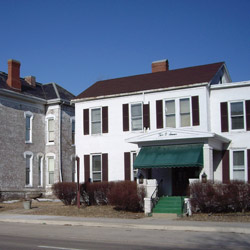
During the last year, the consumer real estate market grabbed national attention and struggled with new economic realities. Although the effects of this economic downturn may have been slower to reach the commercial real estate market, the industry continues to struggle as business slowly recovers.
For this reason, real estate investors and commercial Realtors have turned to using traditional spaces in creative ways. For example, although there has been an increase in the vacancy rate and soft pricing on commercial real estate buildings, I recently sold two properties in Peoria through creativity: an 11,000-square-foot office building to be used as a senior daycare center and hospice facility, and a former hotel converted into an upscale senior living facility. Although both properties may have remained vacant otherwise, they now have new life as functional, valuable commercial real estate. Plus, both have a stable cash flow, which increases their overall investment value.
Recent Market Trends
Most people think of commercial real estate as warehousing and retail spaces, but commercial real estate covers a wide range of structures, including medical office buildings, multi-family dwellings, warehouses and retail. In fact, commercial real estate serves as a foundation for growth in American industry and the economy by helping to bring life and vitality back into cities and surrounding areas.
Recently, national trends in commercial real estate have led to more open office, warehousing and retail space. Vacancy rates have climbed overall, and defaults on loans have made national news on a regular basis. Nevertheless, there are bright spots in the market today. For example, medical office buildings continue to be good investments because the demand for healthcare remains steady. Although the impact of the national healthcare reform bill remains to be seen, there’s no doubt that the need for medical care will continue to increase as the population ages and new technology drives demand.
Also, the market for multi-family housing remains strong across the nation as more potential homeowners make the choice to rent. In fact, the demand for multi-family units should remain strong as fewer potential home buyers enter the market in the next few years.
High unemployment and tight credit conditions continue to challenge both the commercial and consumer real estate markets. According to the National Association for Realtors (NAR) Commercial Member Profile, most commercial Realtors averaged five sales in the last year, down from the average of eight in 2008. What may be more alarming is the fact that 14 percent of NAR’s members had no transactions in 2009. These figures point to the overall softening of the market because fewer investors are able to buy properties.
A nationwide tradition of constructing too many new commercial buildings—including retail and office space—has contributed to an increase in defaults and vacancies. According to Real Capital Analytics, a national research group, default rates jumped to 3.8 percent from 1.6 percent in 2009, and these rates are predicted to hit 5.1 percent this year. What’s more, all of these factors will contribute to tighter credit policies and lower property values as the market continues to be flooded with vacant properties across the nation.
Encouraging Signs
Still, there are reasons to be optimistic. Prices on commercial properties are beginning to rise again, signaling that property values have bottomed out and lending standards have toughened, but credit is becoming more available. In fact, a recent article in USA Today indicated that Michael Glimcher, CEO of Glimcher Realty Trust, was able to obtain $100 million in loans to be sold on the commercial mortgage-backed securities market. He plans to use the funds to refinance loans for shopping centers in Tennessee and Ohio this year. This is an encouraging sign that the credit pipeline is beginning to open across the nation as the market struggles to regain momentum.
Even so, many experts agree that half of commercial mortgages will be “under water” by the end of the year, and those with loans concentrated in mid-sized banks are the most vulnerable. As a result, high unemployment, excess inventory of office space, tighter underwriting controls for loans, and lower property values will continue to plague the economy and the commercial market for at least the next few years.
Peoria’s Outlook
Here in the Peoria area, we are fortunate to have weathered the economic crisis in slightly better shape than many other areas of the country. While we continue to struggle with high vacancy rates and an abundance of warehouse space, our retail, multi-family and medical office markets remain steady. Plus, investors now have a great opportunity to buy properties at lower-than-expected pricing. Even though lending institutions in this area have been conservative by nature, financing is still readily available and—as the economy continues to improve—investment opportunities will be better than they have been in many years because values will be realigned with more realistic pricing.
Surrounding areas will also have tremendous opportunities for growth as new healthcare groups move into the area, attracted by the medical district initiative. Plus, the market for multi-family units will continue as the demand remains steady. As central Illinois recovers, initiatives that were started before the economic downturn will begin again, and even more opportunities will become available.
Seeking a Commercial Realtor
In today’s economy, it’s especially important to seek a commercial Realtor who can find creative ways to use existing spaces and appropriate financing options for clients. Although the commercial real estate market will continue to rebound slowly nationwide, opportunities for new investors, as well as experienced investors, will continue to grow. A qualified commercial Realtor can help you find the best location to fit your need for business expansion or investment opportunities. Therefore, it will be worth your while to ensure your commercial Realtor has analytic skills that involve cash flow modeling, comparative market analysis, leasing rates, sale lease-back and access to capital markets. iBi
The author of Commercial Real Estate Investment Strategies, Jim Grube is a licensed real estate broker who specializes in commercial real estate. For more information, go to jimgrube.com.

